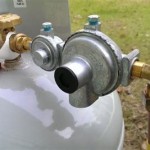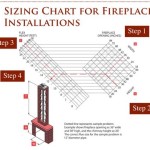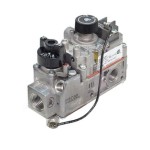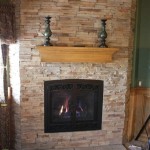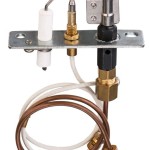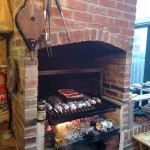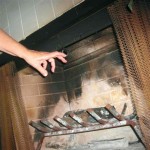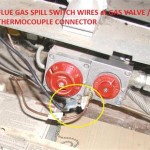Brick Fireplace Refacing: A Comprehensive Guide
Brick fireplaces, once a focal point of warmth and character in many homes, can sometimes become outdated or simply lose their aesthetic appeal. Instead of undertaking a complete fireplace demolition and rebuild, brick fireplace refacing offers a cost-effective and less disruptive alternative to refresh the hearth's appearance. This approach involves applying a new surface over the existing brick, providing a fresh, modern, or classic look without the extensive labor and expense associated with full removal.
Brick fireplace refacing encompasses a variety of techniques and materials, allowing homeowners to tailor the renovation to their specific tastes and budget. The process typically involves preparing the existing brick surface, selecting the desired refacing material, and carefully applying it to create the new aesthetic. Understanding the different options available and the steps involved is crucial for a successful refacing project.
Assessing the Existing Fireplace
Before embarking on a brick fireplace refacing project, a thorough assessment of the existing fireplace is paramount. The structural integrity of the brick and mortar should be evaluated to ensure it can support the new facing material. Cracks, loose bricks, or crumbling mortar need to be addressed before proceeding. Ignoring these issues can compromise the stability of the refaced fireplace and potentially create safety hazards. Professional inspection may be necessary, especially if there are signs of significant damage or deterioration. This assessment helps determine the scope of the project and whether any repairs are necessary prior to refacing.
Furthermore, the fireplace's functionality should be considered. Is it still actively used for burning wood? If so, any refacing materials must be heat-resistant and comply with local building codes and safety regulations. The size and shape of the firebox opening also influence the choices of refacing materials and design. For example, a smaller firebox opening might necessitate using thinner materials to avoid further restricting the airflow. Careful consideration of these factors is essential for a safe and aesthetically pleasing outcome.
Selecting the Refacing Material
Choosing the right refacing material is a critical decision that will significantly impact the final appearance of the fireplace. Several popular options exist, each with its own advantages and disadvantages. Stone veneer is a widely used choice, offering a natural and elegant look. It is available in a variety of colors, textures, and styles, allowing homeowners to replicate the appearance of traditional stone fireplaces. Stone veneer is relatively lightweight and easy to install, making it a suitable option for many existing brick fireplaces.
Another option is tile, which provides a wide range of design possibilities. Tiles come in various materials, including ceramic, porcelain, and glass, offering endless opportunities for customization. Tile is durable, easy to clean, and can be arranged in intricate patterns to create a unique focal point. However, installing tile requires precise cuts and careful application of grout, which can be more challenging than installing stone veneer. Cultured stone is a manufactured product that mimics the appearance of natural stone but is typically more affordable and lighter in weight. It is a popular choice for homeowners seeking a cost-effective and aesthetically pleasing alternative to natural stone.
Other options include wood panels or overlays, which can create a rustic or modern look. Wood refacing requires careful selection of wood species and finishes to ensure durability and resistance to heat. Stucco is another possibility, offering a smooth, textured surface that can be painted in a variety of colors. The choice of material ultimately depends on the homeowner's aesthetic preferences, budget, and the existing fireplace's structural condition.
The Refacing Process
Once the assessment is complete and the refacing material has been selected, the refacing process can begin. The first step is to thoroughly clean the existing brick surface. This involves removing any dirt, dust, soot, or loose mortar. A wire brush and a masonry cleaner can be used to scrub the brick and ensure a clean surface for adhesion. Any cracks or imperfections in the brick or mortar should be repaired at this stage. Filling cracks with mortar or patching damaged bricks will provide a stable base for the new facing material.
Next, a bonding agent or adhesive is applied to the brick surface. This helps ensure that the refacing material adheres properly and prevents it from detaching over time. The specific type of adhesive will depend on the chosen refacing material. For stone veneer or tile, a thin-set mortar is typically used, while other materials may require a construction adhesive. The refacing material is then carefully applied to the brick surface, following the manufacturer's instructions. This may involve cutting the material to size, applying mortar or adhesive, and pressing it firmly onto the brick. Spacers can be used to ensure consistent spacing between tiles or stones. Once the refacing material is installed, it needs to cure or dry completely according to the manufacturer's recommendations.
Finally, finishing touches are added to complete the refacing project. This may involve applying grout to tile, sealing stone veneer, or painting stucco. Any excess mortar or adhesive should be cleaned up, and the surrounding area should be cleared of debris. The fireplace should be inspected to ensure that the refacing material is securely attached and that there are no gaps or imperfections. Professional installation is often recommended, ensuring the project is completed safely and correctly, particularly when dealing with materials requiring specific tools or techniques. Proper installation guarantees longevity and enhances the overall aesthetic of the refaced fireplace.

Reface A Fireplace With The Look Of Stone Or Brick Barron Designs

A Step By Guide To Fireplace Refacing Diy Family Handyman

Our Transformed Fireplace Before After Reface Diy Update

Diy Fireplace Makeover Wood Slat

16 Red Brick Fireplace Makeover Ideas

15 Fabulous Fireplace Refacing Ideas Average But Inspired

10 Fireplace Makeover Ideas Before And After Regency

16 Red Brick Fireplace Makeover Ideas

A Step By Guide To Fireplace Refacing Diy Family Handyman

How I Refaced My 1970 S Brick Fireplace Easily And Inexpensively

